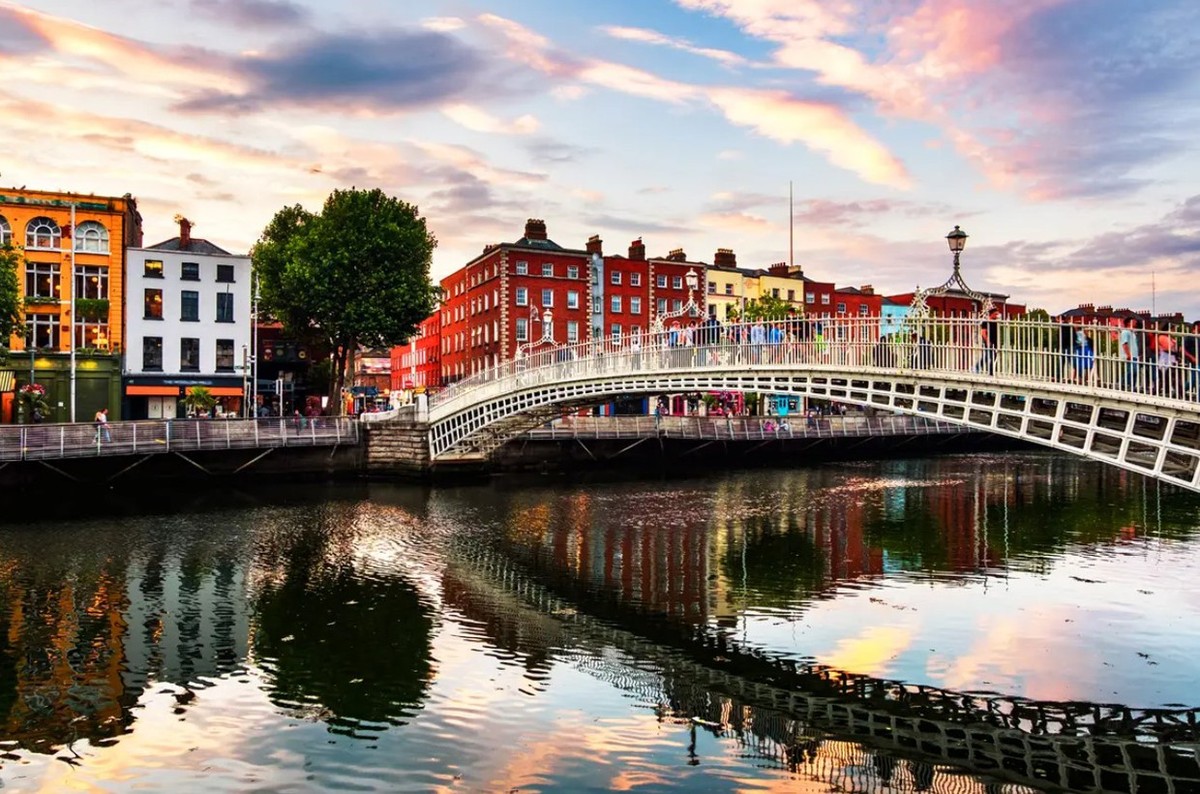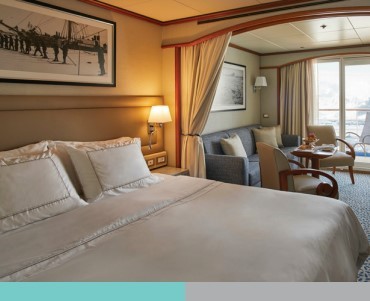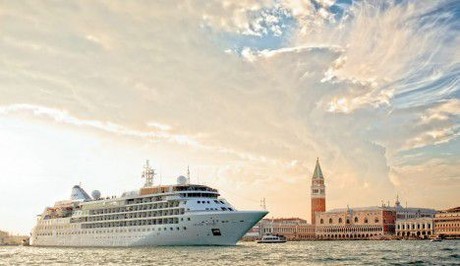show reverse itinerary
Day 2 Dublin
Atmospheric cobbled streets, with buskers scraping fiddles and characterful pubs inviting passersby inside, is Dublin in a snapshot. A city of irrepressible energy and lust for life, Ireland's capital is as welcoming a place as you'll find. Horse-drawn carriages plod along cobbled centuries-old streets, blending with an easy-going, cosmopolitan outlook. Known for its fun-filled gathering of pubs, any excuse works to enjoy a celebratory toast and chat among good company. Home to perhaps the world's most famous beer - slurp perfect pourings of thick, dark Guinness - cranked out for the city's thirsty punters. Learn more of the humble pint's journey at the Guinness Storehouse. Dublin has come along way since the Vikings established a trading port here, back in the 9th Century. In the time since, the city became the British Empire's defacto second city, and the Georgian imprint still adds oodles of historic character. Learn of 1916's Easter Uprising, when the Irish rebelled and established their independence here, as you visit the infamous, haunting Kilmainham Gaol. The uprising's leaders were tried and executed in these dark confines. Dublin's St. Patrick's Cathedral has immense history below its steep spire, which dates back to 1191. There's rich literary heritage to leaf through too, and the city's streets were rendered vividly in James Joyce's classic Ullyses. The Museum of Literature celebrates the full scope of Dublin's lyrical talents. Trinity College also has a prestigious roll-call of alumni - visit to see the Book of Kells, a beautifully illustrated bible of the medieval era.
Day 3 Portrush
Portrush is adjacent to the stunning North Antrim coastline. Here lies the medieval Dunluce Castle ruins. Perched picturesquely at the edge of a rocky outcropping high above the sea, the castle is dramatically surrounded by terrifyingly steep drops, which the early Christians and Vikings would have considered a very important security feature. The castle and surrounding areas have been frequently used for the filming of “Game of Thrones”. Another attraction reached from Portrush is the Giant’s Causeway -40,000 hexagonal basalt columns that descend in a kind of pathway to the sea. Formed over 50 million years ago, visitors have marvelled at its majesty and mystery for centuries, and UNESCO has recognised this site with World Heritage status.
Day 4 Duart, Isle of Mull, Hebrides & Tobermory, Isle of Mull
An ancient stone castle on a remote rugged landscape evokes all sorts of fantasies, especially when approached from the sea. You can imagine mythical, romantic or historic tales as you approach or explore the Duart Castle on the Isle of Mull. The true stories may be just as good.
The Isle of Mull is the second largest of the islands of the Inner Hebrides, after the Isle of Skye. The island has a mountainous core and several radiating promontories covered in moorland. On one headland jutting into the Sound of Mull sits Duart Castle. It was originally built in the 13th century and soon became the ancestral home of the Clan Maclean. Control and ownership of the castle has changed hands over the centuries as broader conflicts for the Isle of Mull and Scotland played out. It was a ruin when the Maclean clan regained control by purchasing and restoring the castle in 1911. It is clan home for all the descendants of the family of Maclean spread throughout the world.
There are stories of wrecks and treasure in the waters near Duart. The most evocative must be the wreck of a Spanish galleon in Tobermony Bay. This ship was part of the Spanish Amarda defeated by the English fleet and Atlantic storms, and the crew were taken to Duart Castle. The galleon is rumoured to have a treasure of gold bullion still waiting to be found. Zodiac travel may reveal other treasures. Mull is known for its European Otters and the majestic White-tailed Sea Eagle which has successfully re-colonised Mull after a long absence.
You'll always receive a welcome to remember, as the colourful cafes, houses and shops that line Tobermory's picturesque harbour salute your arrival. Located on the craggy Scottish Inner Hebrides, Tobermory serves as the capital of the Isle of Mull. There's a high chance you'll recognise the town’s colourfully-daubed buildings, as their charming exteriors have featured in countless TV shows - most notably in the children’s favourite, Balamory. There's always a new story to discover here – not least the legend that suggests there's a sunken Spanish galleon, brimming with lost gold, sitting just below the waves that roll around the harbour. Learn a little more of the area’s history at the Mull Museum, or head out to enjoy some of the fabulous wildlife watching opportunities on offer on a boat tour. You can spot majestic birds like white tail and golden eagles circling in the skies, or turn your attention to the waves, where friendly dolphins and Minke whales are regular visitors. Treat yourself to a sample of one of the island's finest exports before leaving, as you drop in at the Tobermory Distillery for some whiskey tasting. Established in 1798, it’s one of Scotland's oldest distilleries.
Day 5 Shiant Islands, Scotland & Loch Ewe
Cliffs of tall hexagonal columns create a sensational landscape at the Shiant Islands, especially when viewed from the sea. The cliffs of six-sided rock columns look like the cross-section of an enormous honeycomb. The rock formations were formed when molten volcanic magma cooled very slowly underground. Millions of years of erosion has exposed the six-sided columns to the sea, and to us. The tallest of these formations is 120 metres (390 feet) high. During spring and summer, flights of seabirds near the Shiant Islands catch the eye. Many long-winged seabirds wheel and soar gracefully. Others are more shaped for underwater swimming and fly in direct lines, beating stubby wings to resemble flying potatoes. Some birds nest in burrows while others, like Black-legged Kittiwakes, nest on cliffs. Rather than build nests, guillemots lay eggs on bare rock ledges. The pointed shape of the eggs ensures they roll in a tight circle, not off the ledge to the sea below. The Shiant Islands are part of the Outer Hebrides and located between the Isles of Lewis and Skye. Historically, they have supported families of sheep grazers who could tolerate a lonely island outpost. The Shiants were known as the last place in Britain where the Black Rat occurred in substantial numbers. Originally introduced to Britain from Asia in Roman times these rodents caused problems, eating eggs and chicks of seabirds. A successful eradication program eliminated the rats in 2016, giving the seabird colonies well-earned peace.
Loch Ewe is the only north facing Loch in Scotland, with an interesting history and a fine scenic landscape this area has a true natural beauty. During WW2 the loch was a convoy collecting point with a strong naval presence; it was therefore protected by light and heavy aircraft guns, a boom net and mine defence system helped to shield this precious settlement. Loch Ewe is a natural deep water sea loch that links to the Atlantic Ocean with a relatively small mouth giving the loch a vast amount of protection from the weather. Nearby Inver ewe gardens thrive on the warm currents of the North Atlantic Drift to create an oasis of colour and fertility where exotic plants from many countries flourish on latitude more northerly than Moscow, giving an almost continual display of colour throughout the year.
Day 6 Lock Scavaig, Island of Skye, Scotland & Loch Moidart, Scotland
Near the southern end of the Isle of Skye lies Loch Skarvaig. Open to the sea, the sheltered Loch penetrates the rounded granite hills of Skye. Heather moorlands grow on the hill slopes, with purple flowering heathers providing colour, starting in Spring and climaxing later in summer. Common Seals, otherwise known as Harbour Seals, are frequently seen swimming in the coastal water at high tides. Only their heads are visible as they take breaths between diving for a meal of fish, crustaceans or molluscs. At low tides the seals are easier to see, resting on the foreshore rocks. When ashore, Common Seals often lie on one side with their hind flippers and heads raised in a shallow U shape like oversized spotted grey bananas. There are about 300 Common Seals living in and around Loch Coriusk. Skye also has a population of larger Grey Seals with long straight noses. Although all seals are protected now, they were once hunted for their skins, which were used to make clothes and for sporrans to accompany kilts. Considered the shortest river in Britain, Scavaig River or River Coruisk empties into Loch Scavaig. At only a few hundred metres long, it connects to the freshwater of Loch Coruisk. This freshwater loch collects run-off from the hills and overflows down the bends of the river to the sea of Loch Scavaig. Lying close together, the two lochs can look similar at high tide but they have totally different life. The saltwater kelps and shellfish of Loch Scavaig’s shores are revealed at low tide.
Carved into the dramatic west coast, Loch Moidart is a stunning sea loch set amid the classic beauty of the Scottish landscape. Sail these waters to be absorbed by magical views of folded mountains flecked with golds, greens, and browns - all reflected on the placid surface. The large Eilean Shona island dominates the entrance to Loch Moidart, with its shorelines of unspoiled forests and pebble beaches watching over the loch. Loch Moidart is situated among legendary lands of heroic deeds and battles, with the castles in the area attesting to this rich history. The fairytale-like ruins of Tioram Castle stand over the loch's waters, serving as a stunning focal point for sweeping views and photographs. The castle boasts a dramatic natural drawbridge, which is pulled away as the tides return, submerging the causeway leading to it. Whether hiking through the heart of this remarkable scenery or kayaking on the glassy surface, watch for the dolphins and minke whales that sometimes frequent the beautiful depths of this poetically picturesque location. There’s a high chance that we’ll also encounter relaxed sea otters lying back and enjoying the beautiful loch’s waters.
Day 7 Iona & Lunga
If tiny islands that resonate with peace and tranquillity are your idea of travel heaven, then welcome to Iona. Almost 200 miles east of Edinburgh, set in Scotland’s Inner Hebrides, this magical island has a spiritual reputation that precedes it. And luckily, more than lives up to. The island is miniscule. Just three miles long and only one and a half miles wide, this is not a place that hums with urban attractions. 120 people call Iona home (this number rises significantly if the gull, tern and Kittiwake population is added), although residential numbers do go up (to a whopping 175) in summer. The beautiful coastline is lapped by the gulf stream and gives the island a warm climate with sandy beaches that look more Mediterranean than Scottish! Add to that a green field landscape that is just beautiful, and you’ll find that Iona is a place that stays with you long after you leave. Iona’s main attraction is of course its abbey. Built in 563 by Saint Columbia and his monks, the abbey is the reason why Iona is called the cradle of Christianity. Not only is the abbey (today an ecumenical church) one of the best – if not the best – example of ecclesiastical architecture dating from the Middle Ages, but it also serves as an important site of spiritual pilgrimage. St. Martin’s Cross, a 9th century Celtic cross that stands outside the abbey, is considered as the finest example of Celtic crosses in the British Isles. Rèilig Odhrain, or the cemetery, allegedly contains the remains of many Scottish kings.
The stunning Isle of Lunga is the largest island in the Treshnish archipelago. With volcanic origin the isle was populated until the 19th Century, and remains of black houses can be seen around this magnificent coastal jewel. Abundant plant life and exotic birdlife are now the main inhabitants of the area. Fortunate visitors view the magnificent array of birds, especially the great puffins that breed on the islands plateau. One can sit within just a few feet away without disturbing the avian ambassador’s peace. The 81 hectare island is home to many rare and endangered plants such as, primroses and orchids. Views over the landscape and across the ocean can be seen from the 300 foot high cliffs.
Day 8 St. Kilda & Boreray Island cruising
Gloriously remote, St. Kilda is an archipelago 50 miles off the Isle of Harris. Although the four islands are uninhabited by humans, thousands of seas birds call these craggy cliffs home, clinging to the sheer faces as if by magic. Not only is St. Kilda home to the UK’s largest colony of Atlantic Puffin (almost 1 million), but also the world largest colony Gannets nests on Boreray island and its sea stacks. The islands also home decedents of the world’s original Soay sheep as well as having a breed of eponymously named mice. The extremely rare St. Kilda wren unsurprisingly hails from St. Kilda, so birders should visit with notebook, binoculars and camera to hand. While endemic animal species is rife on the island, St. Kilda has not been peopled since 1930 after the last inhabitants voted that human life was unsustainable. However, permanent habitation had been possible in the Medieval Ages, and a vast National Trust for Scotland project to restore the dwellings is currently being undertaken. The islands even enjoyed a status as being an ideal holiday destination in the 19th century. Today, the only humans living on the islands are passionate history, science and conservation scholars. One of the caretakers even acts as shopkeeper and postmaster for any visitors who might like to send a postcard home from St. Kilda. It should be noted that St. Kilda is the UKs only (and just one of 39 in the world) dual World Heritage status from UNESCO in recognition of its Natural Heritage and cultural significance.
As an isolated island of the remote St Kilda Group, Boreray island is one of the most far flung and weather impacted islands of the North East Atlantic. Imagine trying to live here during stormy weather. Landing requires jumping or swimming ashore; and yet the island has been lived on or visited from Neolithic times. Collecting seabirds and their eggs, and storing them for winter, may have been even more important than raising sheep. Boreray Sheep are the rarest breed of sheep in Britain. They evolved from short-tailed sheep brought from the Scottish mainland but have been isolated long enough to have evolved into a distinctive small and horned breed. Only found on Boreray Island, they remained as a wild flock when the last people left the St Kilda Islands in 1930. The Souy are a separate and different breed of sheep found on the other St Kilda Islands. Look out for the Boreray Sheep grazing on the slopes of hilly Boreray Island. Seabirds thrive on Boreray and its two attendant rocks stacks, raising new chicks each summer. Northern Gannets glide overhead as they attempt difficult landings at nest sites. Seeing gannets plunge from a great height into the sea is an exciting way to understand the effort required to feed themselves and chicks. Northern Fulmers nest on the volcanic rock cliffs and Atlantic Puffins fly in and out of burrow-strewn slopes. Boreray is part of the St Kilda World Heritage Site, a rare example of a site recognised for both its outstanding natural and cultural values.
Day 9 Day at sea
Days at sea are the perfect opportunity to relax, unwind and catch up with what you’ve been meaning to do. So whether that is going to the gym, visiting the spa, whale watching, catching up on your reading or simply topping up your tan, these blue sea days are the perfect balance to busy days spent exploring shore side.
Day 10 Djupivogur
Slow the pace and discover the refreshing approach to life that Djupivogur has made its trademark. You can leave your phone behind as you step out into this Icelandic town, which has won awards celebrating its leisurely outlook and stubborn rebellion against the frenetic pace of modern life. After all, who needs emails and notifications when you have some of the most humbling monochrome scenery and gashed fjords, waiting on your doorstep? Sitting on a peninsula to the south-east of Iceland, the glacial approach to life here wins many hearts. A place where hammers knock on metal in workshops, artists ladle paint onto canvases, and where you might spot a few Icelandic horses roaming across mountains, Djupivogur is an uninhibited artistic hub - full of makers and creatives. The most expansive project is the 34 egg sculptures that dot the coastline, created by the Icelandic artist, Sigurður Guðmundsson. Each egg represents a different native bird species. Fishing remains the primary industry, and you can savour the soft fruits of the labour in restaurants serving up smoked trout and fish soup within their cosy confines. Wander the surrounding landscapes, where snow-freckled mountains rise, and lazy seals lie on dark rock beaches, to feel Djupivogur's natural inspiration seeping under your skin. Alive with greens and golds in summer, further ventures reveal glaciers and the sprawling waterfalls of Vatnajökull National Park. The cliff-hugging puffins of Papey Island are a must see, while Bulandstindur Mountain's pyramid shape is a stand out even among these fairy-tale landscapes.
Day 11 Vestmannaeyjar & Cruise Surtsey
The name Vestmannaeyjar refers to both a town and an archipelago off the south coast of Iceland. The largest Vestmannaeyjar island is called Heimaey. It is the only inhabited island in the group and is home to over 4000 people. The eruption of the Eldfell Volcano put Vestmannaeyjar into the international lime light in 1973. The volcano’s eruption destroyed many buildings and forced an evacuation of the residents to mainland Iceland. The lava flow was stopped in its tracks by the application of billions of liters of cold sea water. Since the eruption, life on the small island outpost has returned to the natural ebb and flow of a small coastal fishing community on the edge of the chilly and wild North Atlantic.
On 14 November 1963, a trawler passing the southernmost point of Iceland spotted a column of smoke rising from the sea. Expecting to find a burning boat they were surprised to find instead, explosive volcanic eruptions. They were witnessing the birth of a new island. Columns of ash reached heights of almost 30,000 feet in the sky and could be seen on clear days as far away as Reykjavík. The eruptions continued for three and a half years, ending in June 1967. Once formed, Surtsey was 492 feet above sea level and covered an area of almost 2 square miles. The island was named after the Norse fire god Surtur. It is a perfect scientific study area used to understand the colonization process of new land by plant and animal life.
Day 12 Reykjavik
The capital of Iceland’s land of ice, fire and natural wonder, Reykjavik is a city like no other - blossoming among some of the world’s most vibrant and violent scenery. Home to two-thirds of Iceland’s population, Reykjavik is the island’s only real city, and a welcoming and walkable place - full of bicycles gliding along boulevards or battling the wind when it rears up. Fresh licks of paint brighten the streets, and an artistic and creative atmosphere embraces studios and galleries - as well as the kitchens where an exciting culinary scene is burgeoning. Plot your adventures in the city's hip bars and cosy cafes, or waste no time in venturing out to Iceland’s outdoor adventures. Reykjavik’s buildings stand together - below the whip of winter’s winds - together with the magnificent Hallgrímskirkja church, with its bell tower rising resolutely over the city. Iceland’s largest church's design echoes the lava flows that have shaped this remote land and boasts a clean and elegant interior. The Harpa Concert Hall’s sheer glass facade helps it to assimilate into the landscape, mirroring back the city and harbour. Its LED lights shimmer in honour of Iceland’s greatest illuminated performance – the northern lights. Walk in the crusts between continents, feel the spray from bursts of geysers and witness the enduring power of Iceland’s massive waterfalls. Whether you want to sizzle away in the earth-heated geothermal pools, or hike to your heart’s content, you can do it all from Reykjavik - the colourful capital of this astonishing outdoor country.
Please Note:
Itineraries are subject to change.





















